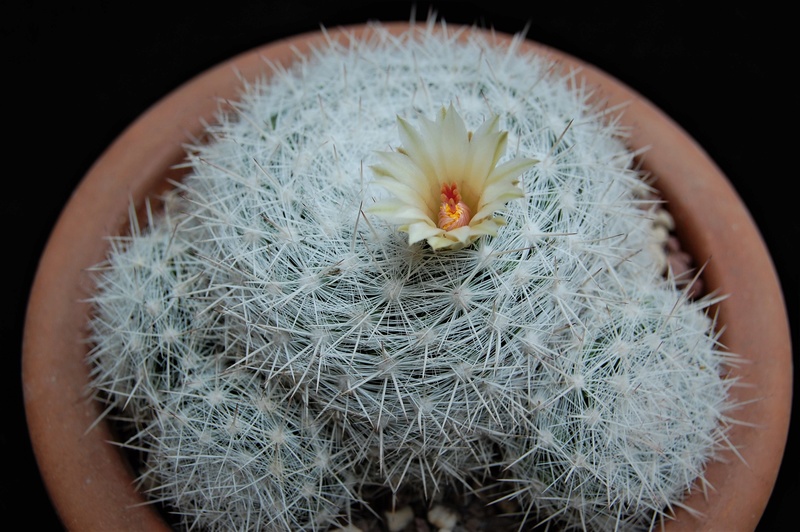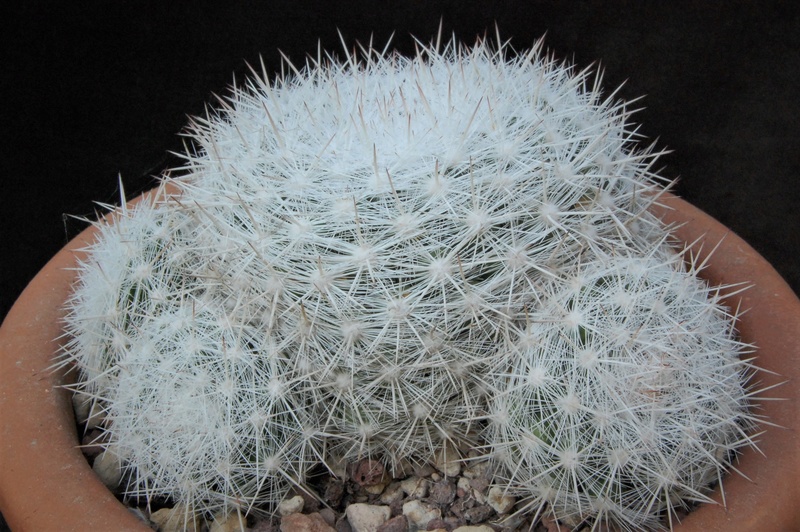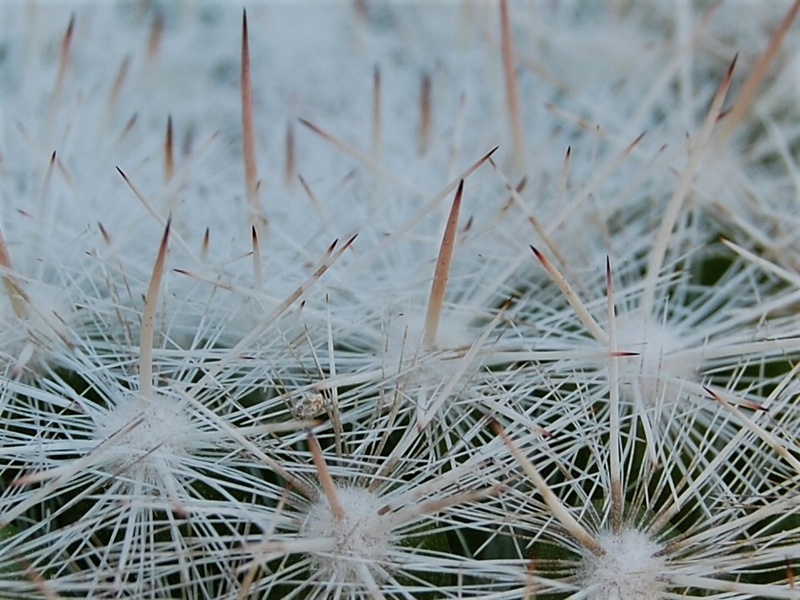5. Mammillaria ortiz rubiona (Bravo) Werdermann.
Body: Very caespitose to large clumps, individual heads depressed globose, slightly sunken and white woolly at apex, 8 - 1 0 cm, wide.
Tubercles: arranged in 8 and 13 spirals, dull grey green, cylindric to. clavate, rounded at apex, with watery sap, 13 - 18 mm. long, 10 mm, wide at base,
Areoles: Oval, with short white wool in youth. Axils with numerous white setaceous hairs extending beyond tubercles.
Spines: Central 4 - 6 , 12-15 mm. long, acicular, straight, smooth, stiff, brittle, white sometimes with rose tip, one is porrect, others nearly in
same plane as radials and differing only in size. Radials 25 - 30, 4 -15 mm, long very fine acicular to hair-like, straight smooth, semi-flexuous, white, horizontal and interlacing.
Flowers: Funnelform, 35 mm. long, 30,mm. wide. Outer Perianth segments light grey green wide mid stripe, pale pink midline, very pale pink margins, wide spatulate, tip acute, margins ciliate. Inner perianth segments, very pale greenish white to very pale pink, pink mid-line, spatulate 4 mm. wide, tip acute, margins entire. Filaments very pale pink, hooked; Anthers deep orange; Style pale pink. Stigma-lobes 6 - 8 , tannish pink, later to deep pink, 3 mm. long, overtop anthers 3 - 4 mm.
Fruit: Carmine, clavate, with dried perianth persisting.
Seeds: Black, glossy, pitted regularly in rows, 1.5mm.
Distribution: Guanajuato and Queretaro, Mexico,
Type Locality-: None given but reported from along the border between the two states.
From " The Journal of the Mammillaria Society" vol.1 n.6 - June 1961
Mammillaria ortizrubiona
With minor differences in the spination, this was reportedly collected from the borders of Guanajuato and Queretaro, but there are no reports of its rediscovery there.
Referred to Mammillaria candida
Mammillaria - John Pilbeam pag.321
In this Gallery also rapresented like Mammillaria candida ssp. ortizrubiana
Mammillaria ortizrubiana
Xichu - Guanajuato - Mexico



